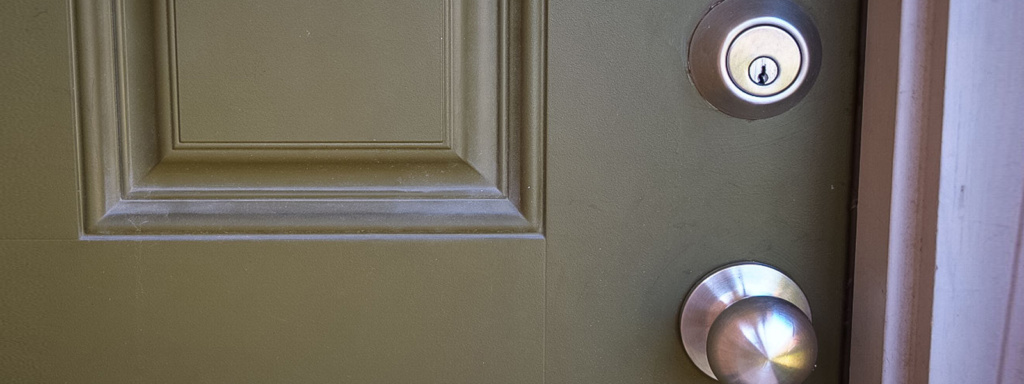Deadlocks, deadlatches and deadbolts- three different types of locking devices that many treat as the same. Among these three, expert locksmiths often recommend deadbolts as the best option for a safe and secure front door. Recently, the word “deadbolt” has almost become synonymous with “safety”. But, why? What makes deadbolts different from other locking apparatuses? Here’s a small guide on everything you should know about deadbolts.
What is a deadbolt?
When discussing locks, the term “dead” refers to the mechanism in which the bolt or device will not move unless locked or unlocked manually. A deadbolt usually has an extending locking bolt that sticks into the wall when locked. The locking device is not spring activated, which means it cannot be “jimmied” open using a blade or credit card. It’s almost impossible to force a door open when locked with a deadbolt.
What are the different types of deadbolts?
There are mainly three types of deadbolts available in the market. They are :
- Single cylinder deadbolt
- Double cylinder deadbolt
- Keyless deadbolt
Both single cylinder and double cylinder deadbolts must have a case made of hardened steel that contains a bolt that can extend for 1-inch at least. The connecting screws must have a 0.25-inch diameter and must also be inside the steel case. The cylinder collar of the bolts should be round, solid metal pieces that are free-spinning to avoid break-ins. Unless they meet these criteria, these two sets of deadbolts are considered bad security devices.
1. Single Cylinder Deadbolt

This type of deadbolts is the most commonly used. Single-cylinder deadbolts have keyholes on the exterior side and knobs on the inside. The bolt is activated using a key from outside and a thumb turner on the interior side of the door. Make sure you install single cylinder deadbolts where there isn’t breakable glass nearby. If there is glass within 40-inches of the bolt, an intruder could break the glass and unlock the door by turning the thumbpiece.
2. Double Cylinder Deadbolt
One major difference between a single-cylinder deadbolt and a double cylinder deadbolt is that the double cylinder deadbolt does not have a knob. This means that the deadbolt has a manual locking and unlocking mechanism from either side of the door. So, unlike a single cylinder deadbolt, a double cylinder deadbolt can be installed near the glass. It is advised to always leave the key in the lock or nearby when you’re home, as deadbolts can prevent escape in case of emergencies or a fire breaks out.
3. Keyless Deadbolt
As the name suggests, a keyless deadbolt does not have a key. It uses a keypad to unlock the door. This type of deadbolt allows fast and easy entry to your home. Lit keypads are among the most convenient features of keyless deadbolts, making them particularly preferable in bad weather conditions or at night. You can program multiple user codes and set a limit for incorrect entries. Some touchpad deadbolt locks also come with keys for emergencies.
Installing deadbolts is one of the most efficient security practices. The time it’ll take to “pick” a deadbolt lock often drives burglars away from your home. We hope this article helped you learn everything you should know about deadbolts. To make sure the lock does its function well, you have to install it properly. Take the help of a professional locksmith to get your deadlocks installed properly. Are you searching for reliable locksmith services in Perth? Contact us or call us at 0492 360 504 for quick and efficient solutions. We can get to you super-fast if you are around Innaloo, Doubleview, Wembley, Balcatta, Carine or Duncraig.

